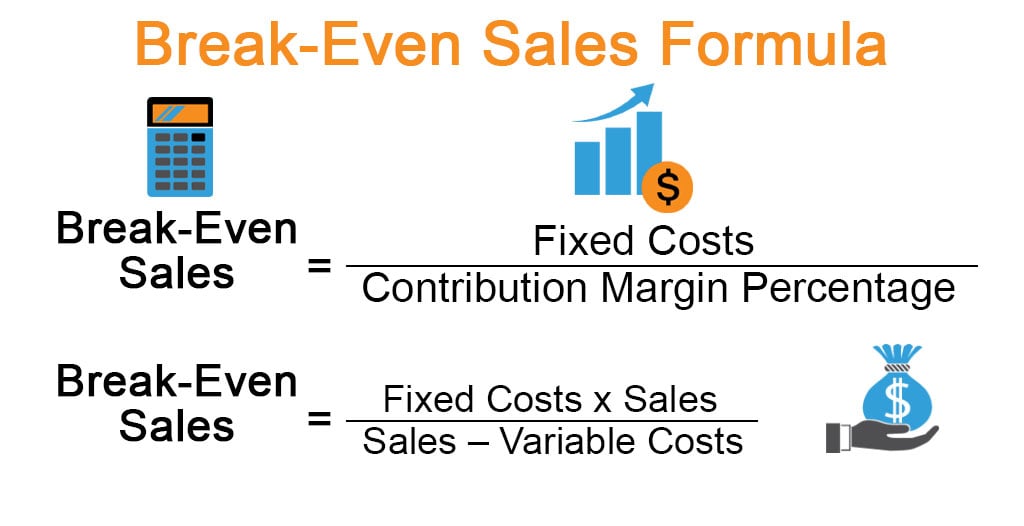
To understand this calculation, it can help to know the meanings of all of the factors used in it. To get a better sense of what this all means, let’s take a more detailed look at the formula components. Central to the break-even analysis is the concept of the break-even point (BEP).
Finding your break-even point gives you a better idea of which risks are really worth taking. The biggest use for break-even analysis is to determine whether or not your company is breaking even. Finding the break-even point of your business allows you to determine how much more revenue you need to generate in order to reach a profit. Conversely, it can also help you determine how many costs you need to cut to reach profitability. Out of the several ways to measure your business’s profitability, calculating the break-even point is one of the most simplistic.
At the break-even point, the total cost and selling price are equal, and the firm neither gains nor losses. Calculating breakeven points can be used when talking about a business or with traders in the market when they consider recouping losses or some initial outlay. Options traders also use the technique to figure out what price level the underlying price must be for a trade so that it expires in the money. A breakeven point calculation is often done by also including the costs of any fees, commissions, taxes, and in some cases, the effects of inflation. Consider the following example in which an investor pays a $10 premium for a stock call option, and the strike price is $100. The breakeven point would equal the $10 premium plus the $100 strike price, or $110.

The more profit a company makes on its units, the fewer it needs to sell to break even. The total variable costs will therefore be equal to the variable cost per unit of $10.00 multiplied by the number of units sold. In terms of its cost structure, the company has fixed costs (i.e., constant regardless of production volume) that amounts to $50k per year. Recall, fixed costs are independent of the sales volume for the given period, and include costs such as the monthly rent, the base employee salaries, and insurance. The break even point formula shows you how much you should sell so that your expenses and revenue balance. This helps set real targets which can be helpful for your sales team.
For example, your break-even point formula might need to be accommodate costs that work in a different way (you get a bulk discount or fixed costs jump at certain intervals). The latter is a similar calculation, but it’s based around knowing how much you bring in over a certain period of time. It might be a good idea to come back to this break-even calculator after you actually start doing business. Often what is motor vehicle excise tax times you will find the need to adjust your costs and factor in things you overlooked before. This will give us the total dollar amount in sales that will we need to achieve in order to have zero loss and zero profit. Now we can take this concept a step further and compute the total number of units that need to be sold in order to achieve a certain level profitability with out break-even calculator.
When there is an increase in customer sales, it means that there is higher demand. A company then needs to produce more of its products to meet this new demand which, in turn, raises the break-even point in order to cover the extra expenses. Break-even analysis is often a component of sensitivity analysis and scenario analysis performed in financial modeling.
You can also check out our markup calculator and margin calculator. For information pertaining to the registration status of 11 Financial, please contact the state securities regulators for those states in which 11 Financial maintains a registration filing. As we can see from the sensitivity table, the company operates at a loss until it begins to sell products in quantities in excess of 5k. For instance, if the company sells 5.5k products, its net profit is $5k. Below is a break down of subject weightings in the FMVA® financial analyst program. As you can see there is a heavy focus on financial modeling, finance, Excel, business valuation, budgeting/forecasting, PowerPoint presentations, accounting and business strategy.
One limitation of break-even analysis is that it assumes selling prices will stay the same over time. In reality, prices often fluctuate due to market conditions, competition, or changes in demand. For example, if you run a café, you might decide to lower the price of your best-selling drink to attract more customers. While this could boost foot traffic, it also means your break-even point will change and you’ll need to sell more drinks to reach profitability. Having high fixed costs puts a lot of pressure on a business to make up those expenses with sales revenue.
Penetration strategy is related to loss leader pricing, where a few products are priced exceptionally low to grab attention, but other products are still sold at full price. If you’re looking for other small business tips and accounting tools, we’re here to help. QuickBooks can assist with tasks from bookkeeping and payroll to inventory analysis and profitability.